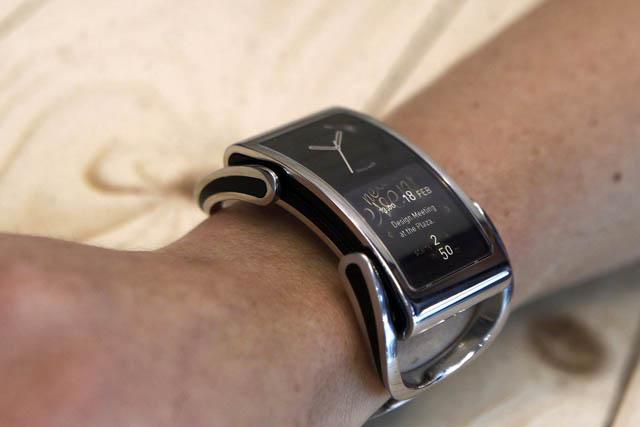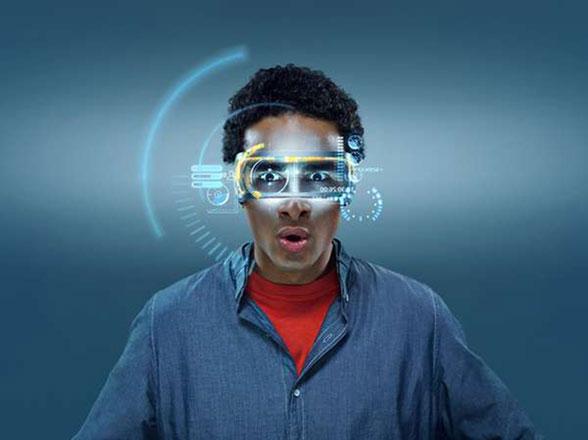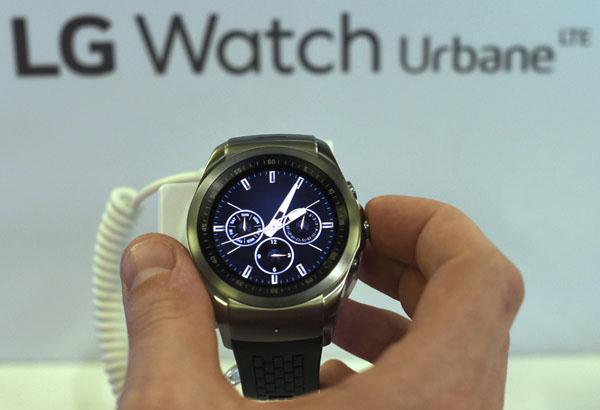You are here
Smartphone giants want your body
By AFP - Feb 25,2014 - Last updated at Feb 25,2014

BARCELONA – Smartphone makers are fighting for space on your wrist and your head, lucrative real estate for a new wave of high-tech devices if only they can persuade you to wear them.
Manufacturers unleashed a battery of new wearable devices at the world’s biggest mobile fair in Barcelona, Spain, trying to carve out new revenue sources in developed markets where smartphone sales are slowing.
From smart bracelets that track your fitness to watches and glasses that let you take a call or check text messages and e-mail, these gadgets are the new stars of the February 24-27 Mobile World Congress.
Wearable devices first became commercially viable in 2013, said David Sovie, head of electronics and technology at Dublin-based consultancy group Accenture.
“I think 2014 is when you will start to see more mass market, or at least wider adoption of these technologies,” he said.
According to an Accenture study of 23,000 consumers in 23 countries, there is a large appetite for such products, with 46 per cent saying they were interested in smart watches and 42 per cent in smart glasses.
The first target is fitness fanatics, wooed with bracelets that record the number of steps they take, the distance travelled, calories used, or even their heartbeat.
US firm Fitbit, leader with more than 60 per cent of the market for wearable fitness devices, has invited congress visitors to join a contest by strapping on a bracelet during their stay in Barcelona. The winner is the competitor who has moved most.
“We will have 1,000 participants by the end of the week,” said Benoit Raimbault, head of marketing for Europe, stressing that the bracelet prods you to “move more, eat better and sleep better”.
“Today the market for fitness bands is growing well and this segment will be exploited over the next years,” said Annette Zimermann, analyst at technology consultants Gartner Inc.
Sony Mobile revealed on the opening day of the fair its SmartBand SWR10, a bracelet that comes with an application allowing users to log events and photographs taken during the day as well as tracking how far they walk and checking their sleep cycle.
Smart watches, connected by wireless Bluetooth technology to the smartphone, are still trying to find a mass market, however, said Zimermann. “Smart watches still lack good design and functionality so uptake of those devices have been very slow,” she explained.
Research house Canalys nevertheless predicts a boom in connected bracelets and watches, with sales surpassing 17 million units this year and approaching 45 million in 2017.
“It’s about having an independent product that works as a standalone and does not need to be connected to your smartphone,” said Archana Vidyasekar, specialist at analysts Frost & Sullivan.
“I think that is going to define the success of the market in the consumer industry.”
The first elegant smartwatch
Samsung was one of the first heavyweights to enter the market, releasing last September its Galaxy Gear smartwatch, which lets a user read text messages and e-mails, check online services such as the weather and make calls.
But with a lukewarm reception from critics and, according to analysts, disappointing sales, Samsung launched a new version Sunday, the Gear 2, which includes a camera, TV remote control and a heart rate sensor.
Chinese smartphone maker Huawei revealed a connected watch of its own on the same day, a TalkBand, to be sold for 99 euros ($136).
Hours later, South Korean manufacturer LG said it would launch its first smartwatch in 2014.
Small Finnish firm Creoir says its model, Ibis, is “the first elegant smartwatch”.
“All the connected watches are with sports designs or geeks designs; my wife wouldn’t wear that,” said Creoir marketing chief Ismo Karali.
Already famous though not yet on sale, Google Glass is the showpiece of the third category of wearable device: connected glasses that let you check your e-mails, for example, with no more than a glance.
“I have been using it for about a month, but they are very intuitive, I gave it to my six-year-old daughter and she was able to figure it out within minutes,” said Cameron Green head of mobile business at technical standards group GS1, who has been testing the Google Glass.
Related Articles
BARCELONA — Consumers are snapping up fitness trackers, smartwatches and other connected wearable gadgets — but huge numbers wind up in draw
Sensors that track steps, pulse, diet and more marked a wearable computing fashion trend this year as they evolve from measuring what we’ve done to telling us what to do.
Defying scepticism and geek-stigma, mobile phone firms are determined this year to sell you a wristwatch wirelessly connected to your mobile phone.














